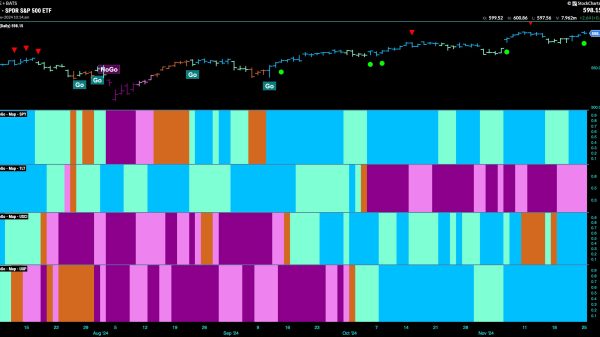In today’s global economic uncertainty, business resiliency has gained more attention. Companies of any size have learned how responding rapidly to fluctuations in demand can give them a competitive edge throughout the value chain and from end consumers.
One way companies cope with the dynamic economic environment is by seeking make-or-buy decisions. A scenario-based approach is recommended to establish the basis for these decisions and leverage their benefits. It entails the following steps:
Determine “Parts”
Identifying products, parts, and processes, collectively known as “parts,” is the first step in making the fact base for make-or-buy decisions. Companies should thoroughly evaluate them to learn where they stand regarding demand, capacity utilization, and costs.
For example, they must forecast demand for all parts to identify their future production requirements. They also have to know what machines and how long they’re used in the production process of each part.
A detailed understanding of these assessments allows companies to identify the total cost of each part’s internal production and accurately allocate indirect expenses. It ensures that companies have precise estimates and can compare in-house production costs with suppliers’ offers as inputs to make-or-buy decisions.
Evaluate Strategic Value and Cost Advantages
When companies have to make outsourcing decisions, assessing the strategic value of making or buying parts is crucial. Companies must factor in several relevant dimensions to assess the strategic value and issues.
For example, they need to consider flexibility. It allows for variable costs that can preserve profit margins and give companies revenue streams without putting the underutilization of capacity at risk. These perks should be weighed against supply continuity and intellectual-property protection risks, which are common in outsourcing arrangements.
Companies should also compare their structural advantages with those of potential suppliers. They should consider operational issues and consumer behaviors if they prefer the classic in-house production. Customer expectations, in particular, argue in favor of making value through classic production since they usually call for consistent, high-quality, short supply chains.
In contrast, the in-house production’s strategic value is typically higher if only a few qualified suppliers exist. Products and processes with solid interdependencies are typically more valuable and kept in-house. If they have low value, companies should consider their potential for future development and process innovations before handing over control to suppliers.
Further, when determining the parts’ relative cost position, companies should identify and assess the most feasible potential suppliers’ sites, capabilities and capacity. It ensures cost reduction and revenue generation.
Firms can use quantitative models to maximize relative cost position and savings potential. These tools incorporate local parameters, labor development costs, energy costs, productivity, and other relevant factors for the next five to ten years.
Create Sourcing Combinations Scenarios
The results of strategic value and relative cost position assessments can be used to make holistic scenarios in determining the optimal make-or-buy decision. For example, they help companies realize which is more financially favorable: producing parts with a negative cost position in-house or outsourcing parts with a favorable cost position.
Most parts with high strategic value are recommended to be kept in-house because they’re cheaper to make than buy. In contrast, items with low strategic value are generally better outsourced.
However, not all items with high strategic value can be made in-house. There are instances when buying them can be much cheaper than making them. Companies should enhance these items’ relative cost position to generate more value from in-house production.
Other than lower in-house production costs, companies are advised only to make parts rather than buying them for two conditions. First, accessing suppliers is hard. Second, they can save more while still being able to focus on core strategic products.
Choose the Best Scenario
To choose the best scenario, companies should rank all different scenarios based on their value creation potentials, which are assessed through financial and nonfinancial criteria. Specifically, financial criteria allow companies to create a detailed business case for every scenario. It typically includes the following:
Potential annual cost-savings
Additional labor and equipment costs
Future investment requirements and costs
Restructuring and one-time implementation costs
In contrast, nonfinancial criteria involve:
Ability to maintain product quality
Availability of suppliers
Supply chain and country risks
Feasibility of implementation
Innovation opportunities
Topics directly affecting the financial and nonfinancial criteria should be considered when evaluating scenarios. These include machine utilization, workforce development, and space requirements, to name a few.
Prepare to Implement
If the chosen scenario calls for outsourcing, companies need to choose suppliers with production technologies and the available capacity needed.
Shifting volumes to suppliers can be complex. Hence, finding or developing suppliers capable of taking large production volumes takes some time. It can be even longer because the production process needs close collaboration and innovative ideas.
Another reason is financing difficulty. Opting for an online lender, like CreditNinja in NC, NY, or TX, can shorten the process due to their simpler application process and faster approval times.
In addition to time, regional differences should be taken into consideration. For example, European companies usually experience slower, costlier, and more complex outsourcing processes than companies in the United States. One reason is that many European countries require redeployment and severance pay when in-house production jobs are shifted to suppliers.
Companies should shortlist outsourcing partners and request proposals for services and prices. They should also assess each potential supplier’s technology and coordinate capacity planning opportunities.
Final Thoughts
Make-or-buy decisions aren’t only quantitative comparisons of in-house production costs to a supplier’s quoted price. Based on the preceding points, they also encompass many qualitative issues that can override a numerical analysis of production costs. Ultimately, the decision should maximize a company’s long-term financial outcome.
Read more:
5 Steps to leveraging make-or-buy benefits
























